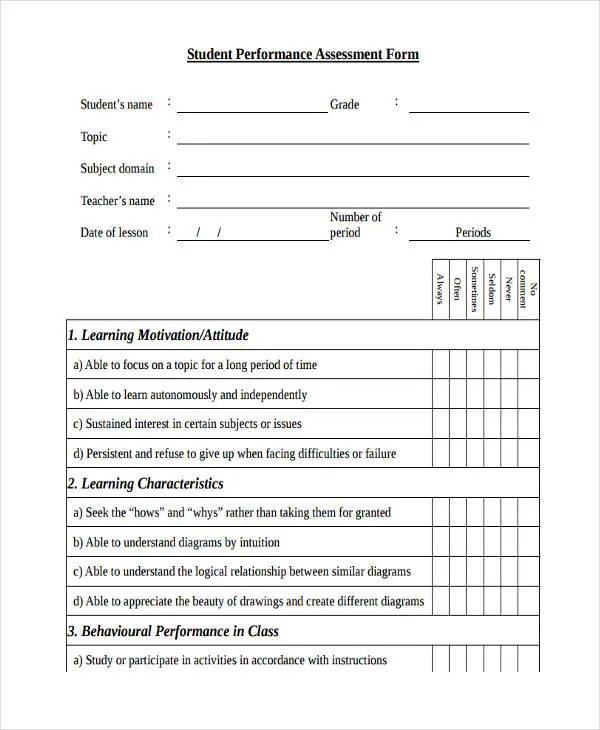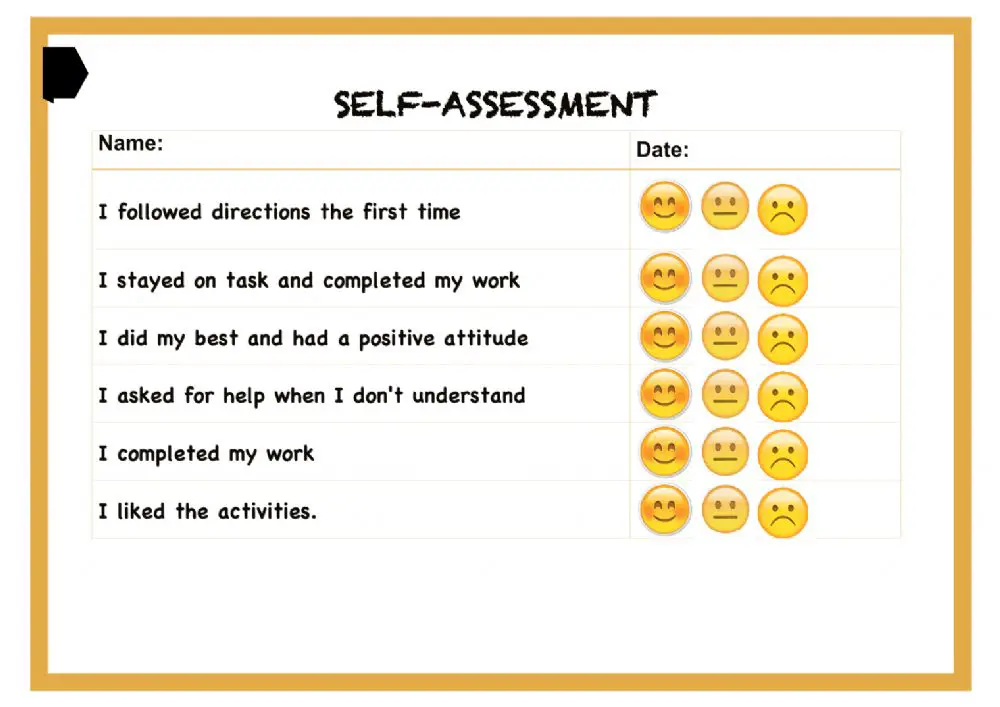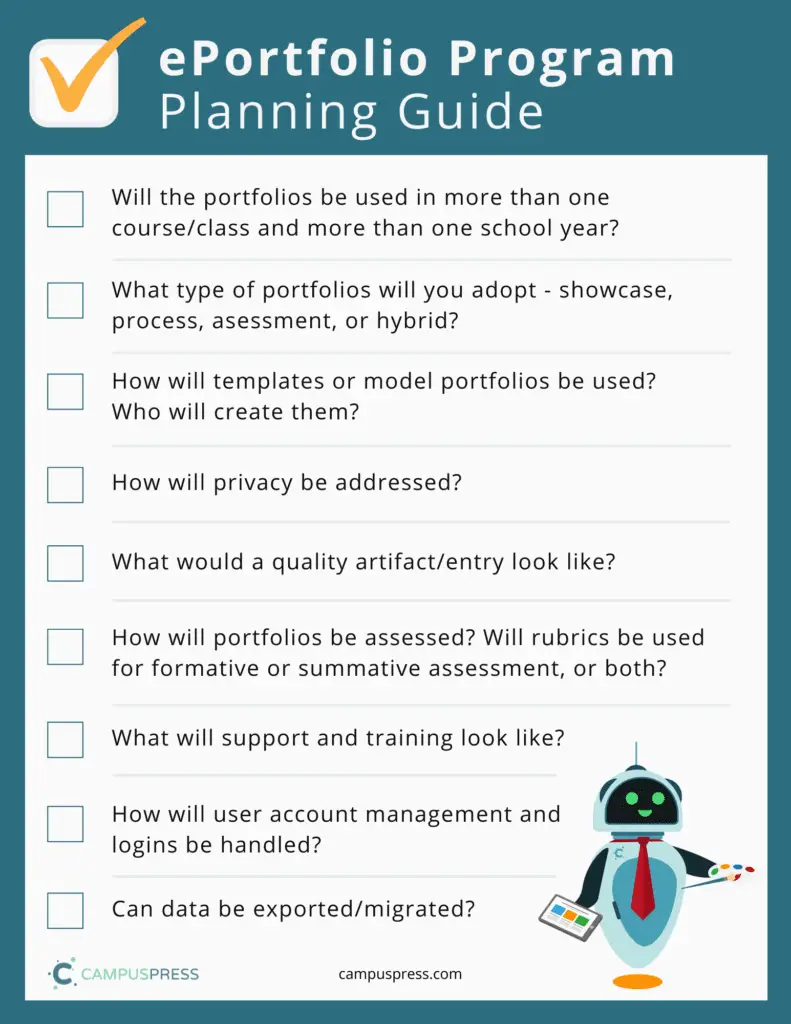Assessment can be defined as a systematic and explicit procedure for measuring the performance of learners. Assessments should provide an accurate and fair indication of students’ attainment, suitability, and progress.
Are you looking for types of assessment in lifelong learning? So this article is for you as it will discuss different types of assessment.
[toc]
15 Types Of Assessment In Lifelong Learning That You Might Not Know
Assessment of learning should be designed to provide the teachers with information that they can use for adapting their teaching methods or adjusting the objectives of their course.
There are several different approaches to assessment in lifelong learning. Following are the types of assessment in lifelong learning.
1. Performance-Based Assessment

Performance-Based Assessment (PBA) assesses the skills and knowledge learners need to acquire to carry out a task. This type of assessment is used extensively in Vocational Education and Training (VET) and requires individuals to demonstrate an ability to use or apply knowledge and/or skills, within realistic contexts.
Benefits
- PBA enables students to perform rather than recall knowledge enabling them to demonstrate what they know, not just what they have memorized.
- PBA also ensures correctness in the use of skills whilst demonstrating their understanding and encourages learners to take responsibility for their learning.
2. Self Reporting Of Learning

Self Reporting of Learning has been used as a method for assessing student learning outcomes at the tertiary level. It is different from other assessment approaches in that it focuses on self-reflection and self-analysis, rather than a comparison with a predetermined standard.
This means that the results indicate what has been learned by the student, rather than how well they have learned it. This approach is gaining favor with universities because of its flexibility and ability to measure student learning holistically.
Benefits
- Emphasizes learning, rather than testing.
- Allows students to be involved in the assessment process.
- Requires minimal marking by teachers.
- Can be used to measure student satisfaction with learning outcomes.
- Includes both formative and summative elements of assessment.
3. Portfolio Assessment

Portfolios offer a wide range of benefits for both learners and educators. In addition to promoting student engagement, portfolios help assess student readiness, learning methods, performance in real-world contexts, achievement of multiple learning outcomes, and lifelong skills such as self-reflection and analysis.
When used appropriately they can provide teachers with valuable insight into the learning process, enabling them to support students in pursuing appropriate learning opportunities.
Benefits
- Students’ knowledge, skills, and attitudes are assessed holistically.
- Portfolios highlight student strengths and weaknesses.
- Provides opportunities to assess work in real-life contexts.
- Can be used with large groups of students.
4. Criterion-Referenced Tests
This assessment model is used to measure the extent to which a learner has achieved the goals of a subject or course. A criterion-referenced test (or criterion-referenced examination) typically consists of one or more questions, each with several possible answers. Each question (or item) is similar to an assessment task.
Benefits
- Assesses whether students have attained the intended learning outcomes.
- Tests can be used as preparation for standardized tests such as those conducted by the SAT and ACT in the United States, and Advanced Placement (AP) Exams in the United States and Canada.
- Measure student achievement of course objectives.
- Assessments are not based on the performance of other students.
- Criterion-Referenced tests are easy to design and use.
5. Norm-Referenced Test
A norm-referenced test is designed to measure the achievement of students within a normal distribution, based on data collected from other students who have previously taken the test. The data collected from a norm-referenced test is used to compare student performance to this standard of “average” achievement.
Benefits
- Norm-referenced tests provide a comparative standard against which individual achievement can be evaluated.
- Allows for comparisons to be made between different groups of students.
6. Teacher Assigned Grades
In this assessment model, students receive a teacher-assigned grade following their performance after the experience of learning is complete. In contrast to other types of assessments where students are involved in the process, this approach largely removes student interactions from the assessment equation.
Teachers often use grades to communicate learner achievement and/or learning potential to other educators.
Benefits
- Allows for students to gain an indication of their performance without the need for further student input.
- Provides feedback that indicates whether or not learners have attained expected learning outcomes.
7. Diagnostic Assessment
A diagnostic assessment is often used by teachers to provide feedback that allows learners the opportunity to be aware of their progress within a subject, or an area where they need further development. In addition to identifying strengths and weaknesses, diagnostic assessments can provide teachers with information about a student’s readiness for future learning experiences.
Benefits
- Allows learners to understand their areas of strength and weakness.
- Helps students realize what content they have not yet mastered, allowing them to plan appropriate next steps in their development.
- Highlights students’ readiness for future learning experiences.
8. Formative Assessment
A formative assessment is any type of assessment that provides feedback to the student, and/or teacher about a learner’s current achievement (and/or learning potential) and helps shape the next steps in the learning process.
Learners may also use this information to reflect on their learning and set appropriate goals for themselves. Formative assessment is generally carried out throughout the learning process to help ensure that learners are progressing well.
Benefits
- Allows teachers to provide feedback about student progress during their learning experiences.
- Can be used to change teaching strategies and/or activities, accordingly, based on learner’s readiness for future learning experiences.
- Provides students with opportunities to reflect on their learning and set appropriate goals for themselves.
9. Summative Assessment
A summative assessment is an assessment of learning after a course or unit, or after long-term study. The results of summative assessments are used to determine an individual student’s achievement compared to the expected learning outcomes of a course and/or unit and will be used as the basis for any kind of certification or qualification awarded.
Benefits
- Allows learners to demonstrate their learning to teachers, parents, and other stakeholders.
- Helps students plan appropriate next steps in their development.
10. Ipsative Assessments
An ipsative assessment measures an individual’s performance concerning his or her previous performance (compared to others). Ipsative assessments are used more often by primary and secondary school students.
Benefits
- Helps students reflect on their learning.
- Highlights areas that students should further develop to reach a higher level of understanding.
- Provides opportunities for self-directed learning.
- Allows learners to set goals to improve their performance concerning areas where they need development.
11. Authentic Assessment
Authentic assessment is any type of assessment that provides authentic evidence of a student’s learning. For example, in the case of written examinations, the questions will be drawn directly from course content rather than being created by an external examiner.
Authentic assessments are often more open-ended and require students to demonstrate their knowledge, skills, or understanding using tasks that are representative of real-life situations or contexts.
Benefits
- Provides learners with opportunities to demonstrate their learning in a format that is more representative of real-life situations and contexts.
- Allows students to demonstrate the full range of understanding, skills, or knowledge that they have achieved.
- By creating open-ended tasks, authentic assessments allow for creativity and imagination, which can result in higher-order thinking skills.
12. Confirmative Assessment
Confirmative assessment is any type of assessment designed to confirm a student’s achievement within a course or unit, as well as their readiness to progress to the next level course or unit. It is used to confirm what students have achieved before progression.
Benefits
- Helps teachers ensure that learners have achieved the learning outcomes for a course or unit, and/or are ready to progress to the next level before proceeding.
- Provides learners with opportunities to demonstrate their knowledge of a subject or skill in a format that they are likely to encounter at the next level.
- By confirming students’ achievements, confirmative assessments provide evidence that can be used as part of certification or qualification processes.
13. Meta-Assessment
A meta-assessment is a form of summative assessment that involves an analysis of the evidence collected from any form of an assessment conducted on a student within his or her lifetime learning journey.
Meta-assessments are used to provide students with feedback about their strengths and achievement gaps, as well as provide data that can be used to improve future learning opportunities.
Benefits
- Provides learners with opportunities to demonstrate their learning in a wider range of situations.
- Allows students to monitor, manage and reflect on their learning over time.
- Helps teachers plan more effective teaching strategies by identifying the strengths and achievement gaps within student cohorts.
- Offers institutions valuable data about learner performance which can be used to improve future learning opportunities.
14. Rubric Based Assessment
Rubric-based assessment is any type of assessment that uses a scoring rubric as its basis, which will describe what constitutes ‘good’ performance concerning achieving the learning outcomes of a course or unit.
When used for assessing student work, rubrics are typically presented as a scoring tool that provides an in-depth analysis of the level of achievement within particular elements of assessment.
Benefits
- Provides students with clear expectations about the core concepts and competencies being assessed to help them better prepare for assessments.
- Helps learners understand the criteria that will be used to judge their performance.
- Allows students the opportunity to reflect upon their work and identify areas of strength and weakness by providing an in-depth analysis of how well they performed.
- Provides teachers with valuable data about learner performance which can inform teaching strategies moving forward.
15. Peer Assessment
Peer assessment is a form of assessment in which learners assess one another’s work, critique each other’s strengths and weaknesses, and provide feedback that will help their peers improve upon areas where further development is required.
Benefits
- Peer assessment can encourage collaboration between students.
- Assessment tasks that are completed in cooperation with other learners tend to be more engaging and of a higher quality.
- May help reduce any feelings of anxiety or intimidation that some students may feel when they are assessed by their teacher.
- Allows students to reflect on their work through the feedback provided by others, which can result in higher-order thinking skills.
Types Of Assessment In Lifelong Learning – Conclusion:
As we can see from the above list, there are many different types of assessment that can be employed to provide learners with feedback on their progress throughout their learning lives. This information will help you as a learner identify which type of assessment is required at any given time and for what purpose, so you can better prepare yourself or your students for it.